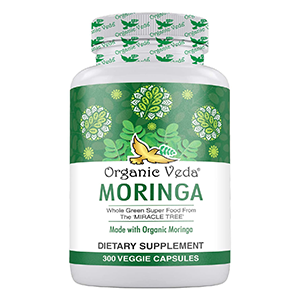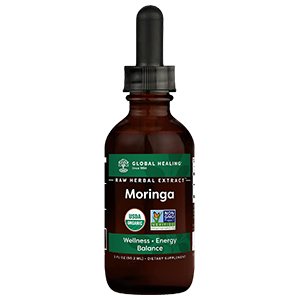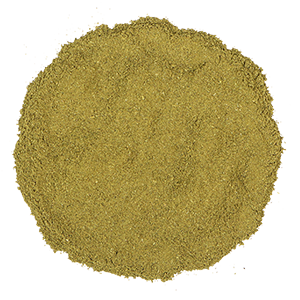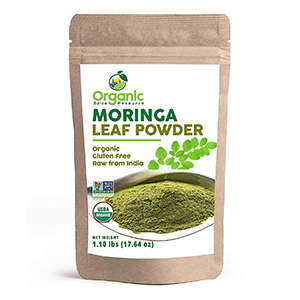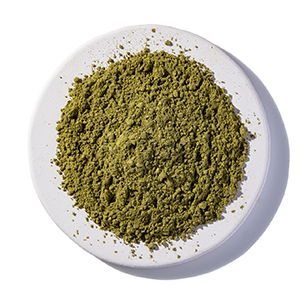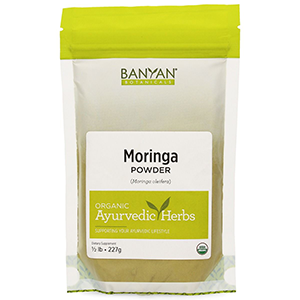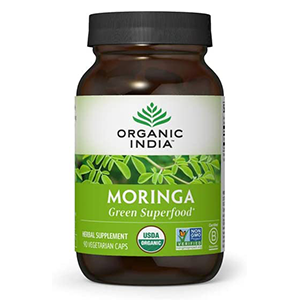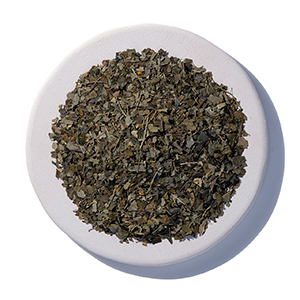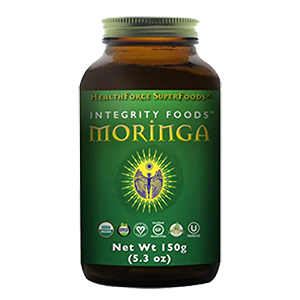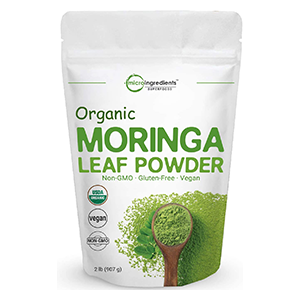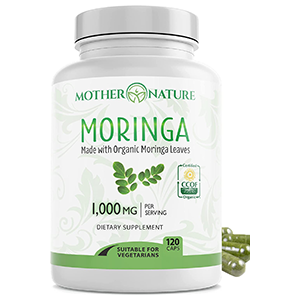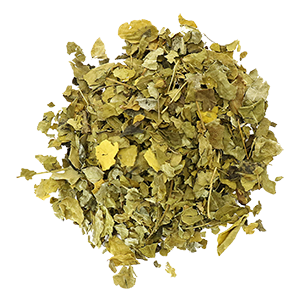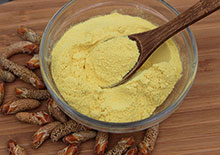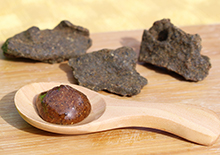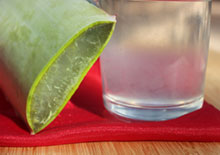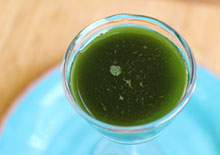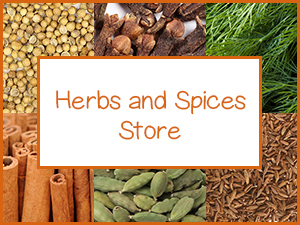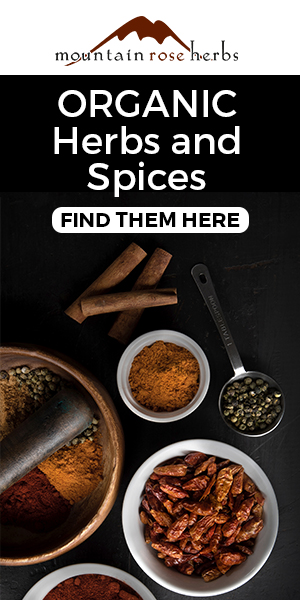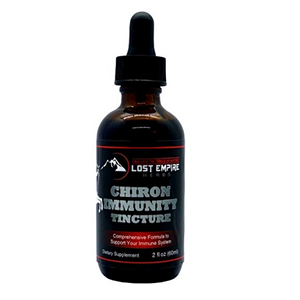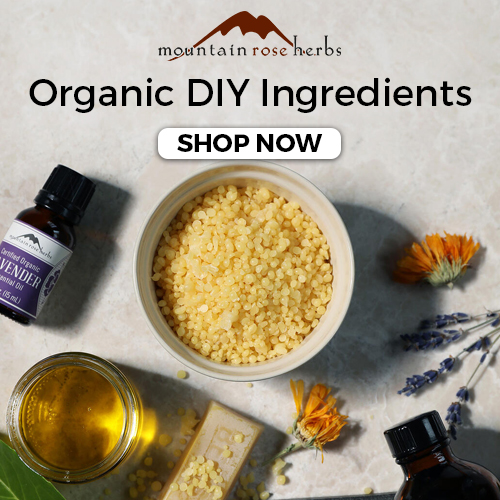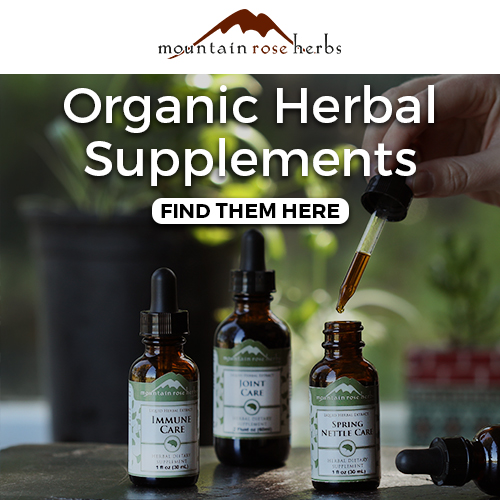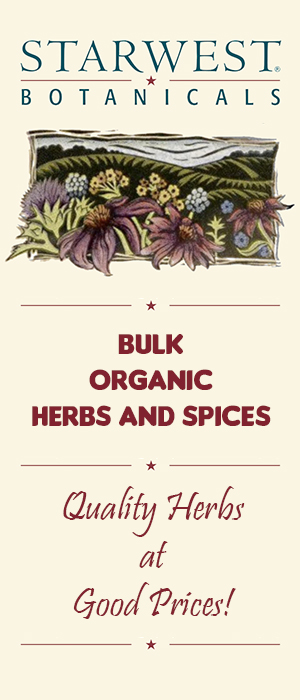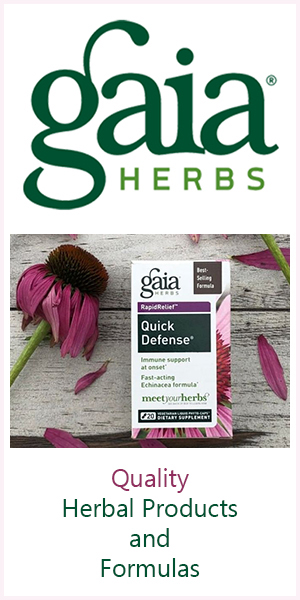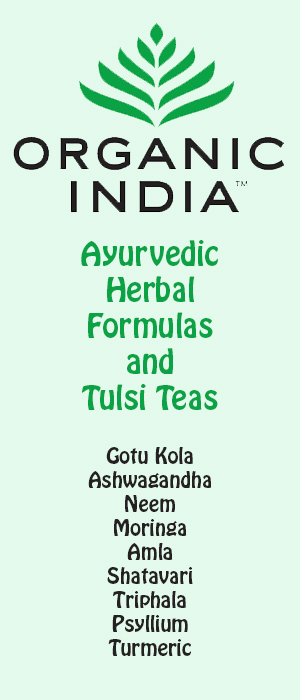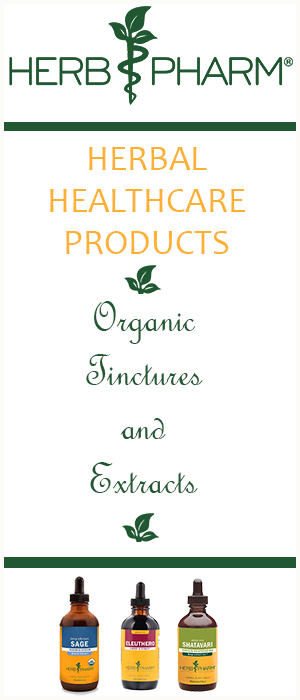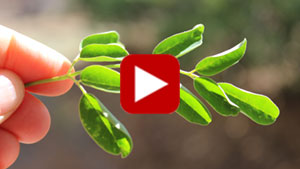- Home
- Top Superfoods
- Benefits of Moringa
Benefits of Moringa, A Nutritious Superfood and Multivitamin
Intro | Benefits of Powder | What is Moringa? | For Permaculture | Growing Moringa | Nutritional Benefits | Multi Purpose Uses | Types | How to Use | Precautions | Shop
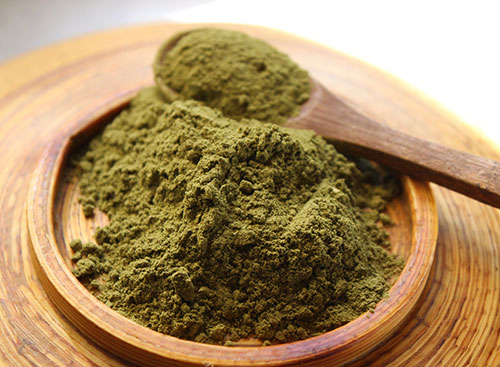
The nutritional benefits of moringa have been valued for centuries in various parts of the world as a highly nourishing dietary food source. The leaves are one of those special green superfoods that exemplify the healing power of chlorophyll-rich plants.
Moringa is actually a tree species, Moringa oleifera, native to tropical climates where it grows rapidly, producing a viable food for indigenous populations.
Table of Contents
Intro | Benefits of Powder | What is Moringa? | For Permaculture | Growing Moringa | Nutritional Benefits | Multi Purpose Uses | Types | How to Use | Precautions | Shop
It is prized as a multi-purpose tree with all parts being usable either as a raw or cooked nutriment, medicine or as a water purification additive.
The leaves are typically the most common part used as an edible green, dried and ground into a powder that can then be added to various foods and drinks.
The whole leaf powder is essentially a natural plant-based mineral, amino acid and multivitamin complex with an impressive array of nutritive components, extensively researched for its polyphenol content, antioxidant properties and usefulness as a natural anti-inflammatory agent.
Although used in the past as a traditional folk remedy for various health issues, government agencies in developing countries, especially in parts of West Africa, have taken steps in recent years to reintroduce moringa cultivation to suburban villages suffering from malnutrition.
Because of these efforts, moringa is now available to these communities for use as a vitamin-mineral supplement that is extremely effective at balancing nutritional uptake needed for greater dietary balance.
The leaves are harvested and steamed as a green vegetable, but are also dried and ground into a powder used in sauces, soups and cooked grains.
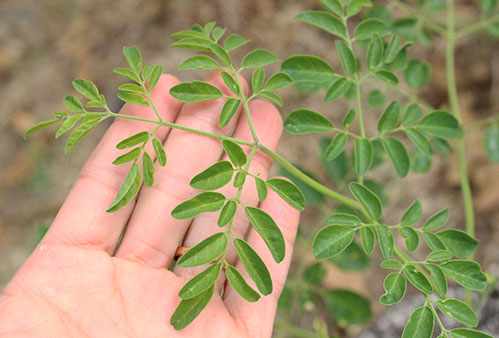
The original species of moringa is native to the Himalayas of northwestern India. Sometimes called "shigru", it is famed in Ayurvedic legends to "prevent 300 diseases." In some parts of India, the leaves and pods are still used as a household vegetable and ingredient in soups and chutneys.
While moringa has been used worldwide as a nutritional supplement in impoverished countries, it has only recently become popular for use as a health enhancing herb amongst modern industrialized societies.
Benefits of Moringa Green Powder
Adding some kind of green powdered superfood to the diet on a regular basis can be extremely beneficial for short term as well as long term health. The ground powder from moringa leaves is one of our top recommended superfood options, along with others like spirulina powder and the supplement Vitamineral Green, which also contains moringa leaf.
Every body type is a bit different, so it is important that you find the right supplement that resonates most with your own metabolic and digestive nature.
Green powders, like moringa, are highly concentrated nutrient dense substances that can help to make up for potential deficiencies that arise in our often busy, modern day to day life. They are also supportive to the detoxification pathways, assisting the body to keep it free of toxins.
What is Moringa?
Moringa is a simple, yet elegant-looking, leafy green tree with drooping branches and tiny rounded leaves.
There are up to 14 species of the genus Moringa and family Moringaceae but Moringa oleifera (also called M. pterygosperma) is believed to be of a higher nutritional quality. The Ethiopian M. stenopetala species from the same family is native to Kenya and also contains similar components to that of M. oleifera.
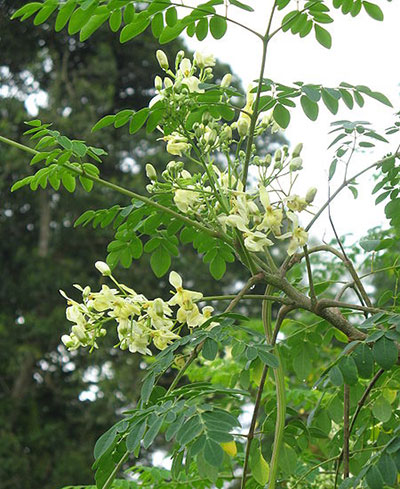
All moringa thrives in subtropical and tropical climate zones as well as hot, dry climates, but can be cultivated in many other parts of the world where moderate temperatures persist. It is a fast-growing plant and, in the ultimate weather conditions, the leaves can be harvested only 2 weeks after planting and will continue to produce edible leaves throughout the entire year. It is a drought-resistant tree and prefers sandy dry soil.
Although moringa goes by literally hundreds of different names around the world, some of the common English nicknames are drumstick tree or horseradish tree. These names refer to a certain aspect of the roots which taste a little like horseradish, and the long bean-like seed pod that resembles the shape of a drumstick.
Moringa for Permaculture Design
Permaculture is defined as "permanent agriculture" and is modeled from natural ecosystems. It is a sustainable food growing system that is eventually self-maintaining, requiring little assistance from human hands.
The moringa tree has been used and studied extensively for use in permaculture design as a fast-growing pioneer canopy species that can reach heights of up to 10-12 meters. It is also a nitrogen fixer that grows very well in degraded soils and helps to reestablish fertility, encouraging the development of a food forest for the small scale cultivation of other useful crops.
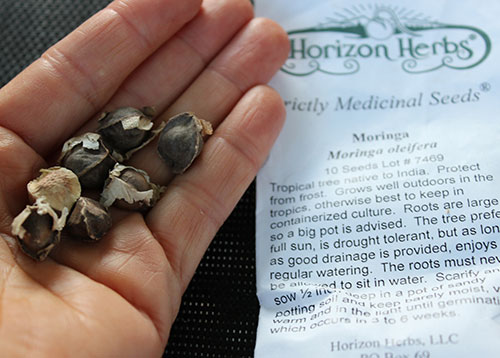
Growing Your Own Moringa Tree
Generally, the moringa tree is a sun loving plant and can be grown in many non-tropical frost-free locations around the world. It is known to adapt to colder temperatures below freezing, especially after the first few years, but will usually go dormant in the winter months.
In the U.S., it grows very well in climate zones 9-10 and thrives best in dry sandy soil. Moringa can be planted from seeds or from plant cuttings.
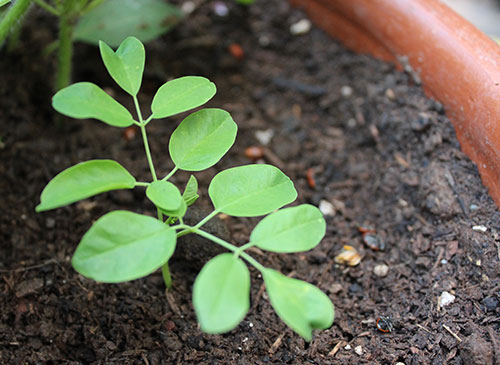
Although moringa can grow quite tall, it can be pruned and kept as a low growing plant that can be easily harvested. In large scale cultivation, it is often cut back annually and allowed to regrow so the leaves remain within arm's reach.
Not only can moringa be grown, harvested and powdered to provide a nutritious garden-produced multivitamin, it can also be used to create natural landscape fencing or used as a protective windbreak or shade canopy.
Nutritional Benefits of Moringa
1) Nutritive Energizer and Mood Enhancer
2) Nourishing for the Eyes, Skin and Hair
3) Natural Anti-inflammatory Aid
Nutritive Energizer and Mood Enhancer
Frequently, when you provide the body with an influx of concentrated nutrients, either through green juicing or green powder supplementation, you may feel an energizing and mood boosting influence as a result.
Consuming moringa concentrate, as a powder or in capsule form, can be naturally enlivening to the
cells because of its purifying, alkalizing and nourishing properties. The body becomes saturated with essential vitamins and minerals that transfuse easily into the bloodstream where the chlorophyll component can further work to remove waste material and balance body pH.
All of these properties function collectively to increase potential energy levels and can naturally help to enhance ones mental attitude, especially in mild to severely depleted cases. This is often simply because complete nutritional needs are being satisfied, providing for greater states of emotional stability and general well-being.
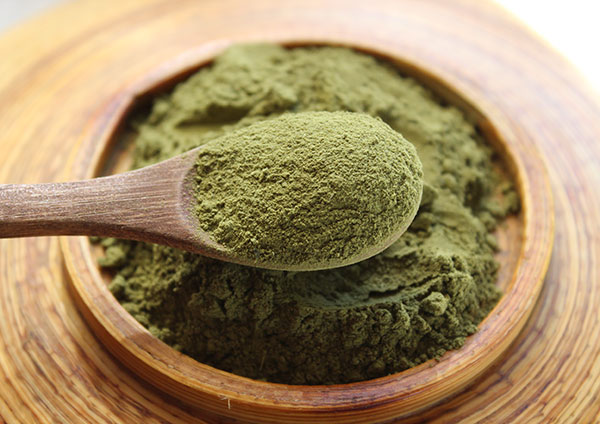
The benefits of moringa powder comprise a full spectrum, whole food vitamin, mineral and amino acid profile. It is particularly high in selenium, calcium, iron, vitamin E, magnesium and B vitamins in addition to varying amounts of other phytonutrients and antioxidants, like beta-carotene and vitamin C. Moringa is a common ingredient used in plant-based vitamin products for this reason.
What Does Moringa Taste Like?
Moringa has a "green" savory taste a bit like a concentrated vegetable broth and is best blended into foods and drinks or used as a seasoning.
The leaves are especially high in protein (about 38%) and contain 18 amino acids, including the 9 essentials: histidine, isoleucine, leucine, lysine, methionine, phenylalanine, threonine, tryptophan and valine.
Moringa leaves can be considered both a combination nutritive herb and leafy green vegetable much like dandelion leaf and nettles. These greens can be dried, juiced or made into a nutrient dense powder to sprinkle on foods or blended into drinks.
As we mentioned, consuming green foods and their dry powdered
concentrates can be significantly helpful for maintaining a balanced nutritional uptake during the course of a lifetime. Moringa can be one of those options for those of you looking for a single sourced plant variety that is not a member of the cruciferous vegetable family. For people with an underactive thyroid or hypothyroidism, some health authorities believe it is best to avoid large quantities of cruciferous vegetables like kale, collard greens, bok choy, broccoli sprouts and watercress.
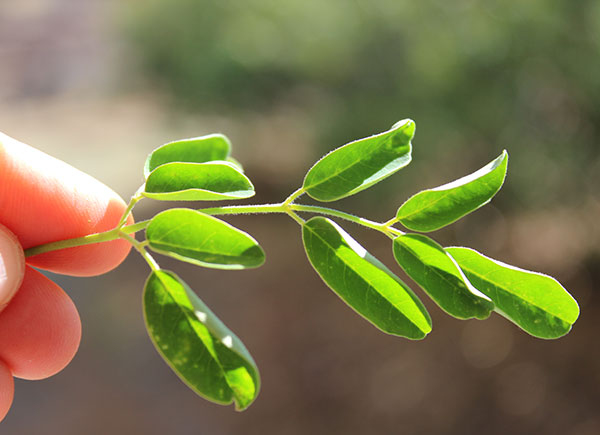
Nourishing for the Eyes, Skin and Hair
Because of moringa's exceptionally high nutrient profile it is particularly nourishing for the eyes, skin and hair. High in the antioxidants beta-carotene and vitamin C, moringa is a nutritive food for maintaining healthy eyes and vision.
It also contains sulfur-based MSM and the sulfur-bearing methionine and cysteine amino acids, which supports softer skin, thicker hair and stronger nails as well as healthy collagen formation, the main structural protein of connective tissue responsible, along with keratin, for skin strength and elasticity.
Sulfur is nature's "beauty mineral" and is necessary for the generation of these beauty enhancing constituents, keratin and collagen. Keratin is made up of cysteine and is further nourished by dietary intake through moringa consumption.
Commonly Used for Worldwide Malnutrition
The benefits of moringa have become known around the world in the last few decades as an effective way to eradicate hunger and malnutrition in third world countries. Because the moringa tree grows very well in poor soils and is virtually drought-resistant, it makes a very suitable food for undernourished populations living in harsh environments unable to grow other vegetables or food crops.
With its plethora of phytonutrients and other powerful disease-fighting antioxidants, the moringa plant and its leaves have become a treasured sustainable food crop in regions of Africa, India, Central and South America, Malaysia and the Philippines.
Daily use of fresh moringa, or between 1t-1T of the dried powder, acts as a multivitamin supplement and provides an added source of protein which can have revitalizing effects on adults as well as malnourished young children. For this reason, it is often referred to as "mother's best friend."
Moringa leaves can be eaten fresh, cooked, or stored in powder form for many months without the need for refrigeration. Additionally, the tree is a fast-growing food source that, under ideal conditions, continues bearing leaves throughout the entire year.
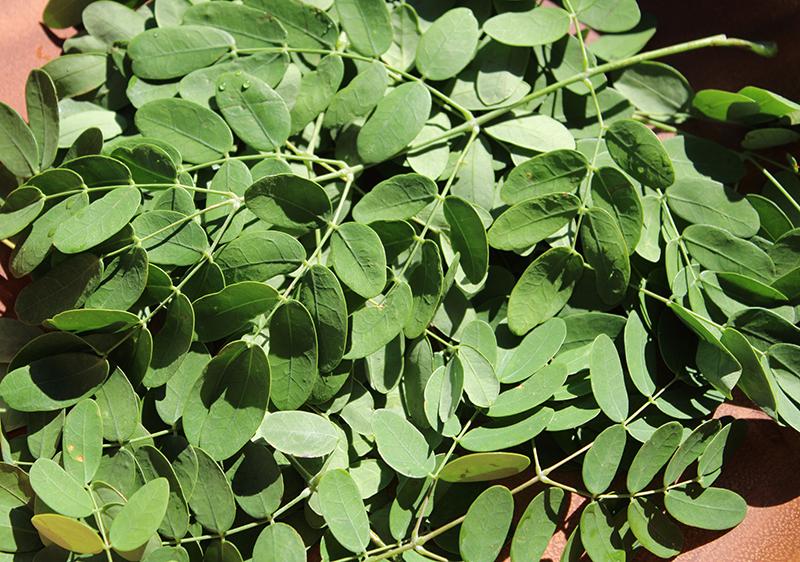
In the news segment
entitled "Miracle Tree Helps in Niger's Food Crisis" produced by the
Australian ABC sponsored program called The World Today, several
interviews were conducted with native peoples of the Niger African
region analyzing the effects of moringa cultivation. Adamou Hamidou,
project manager with aid agency World Vision, states "If we have a
moringa plant we can eat it all the year, non- stop. Last year when you
came to this same place everything was dry and now we see how these same
places are green and the water is now moving."
Local citizen Ramata Hama was quoted through translation encouraging that "Without this tree we would be suffering. But now that we have it we are doing okay because now we can cook it for our children. Without it, we would just be sitting and hoping. Now with the leaves of this tree we don't go without food. We cook it for our children to eat."
Natural Anti-inflammatory Aid
Juiced or powdered moringa leaves, sometimes called "shigru", are a popular Ayurvedic herbal supplement for treating joint inflammation, pain, aches and related arthritic conditions. This is due to its anti-inflammatory and analgesic properties. The high nutrient profile also nutritionally supports strong bones and improved circulation to the joints, guarding against bone loss and osteoporosis.
According to various studies conducted in recent years, evidence supports the benefits of moringa as an anti-inflammatory agent. This includes the leaves in addition to the seeds and roots of the moringa plant. (Source)
In a 2012
published animal study in the Frontiers in Pharmacology it states that, "Extracts from M. oleifera
leaves have been shown to modulate humoral and cellular immunity in
rats and mice. They have exhibited strong anti-inflammatory properties
in rodent models of chemically induced inflammation of the paw."
In another 2011 study entitled, "Analgesic effects of methanolic extracts of the leaf or root of Moringa oleifera" it was shown that "The methanolic extracts of the root or leaf of M. oleifera are effective in the reduction of pain induced by CFA in rats. A comparison of single and combination therapies of root and leaf extracts also showed a synergistic effect on pain reduction."
Inflammation is an integral part of a number of health conditions such as high blood pressure, obesity, diabetes and atherosclerosis. One of the benefits of moringa as a green leafy vegetable is that it is a source of omega-3 fatty acids. Omega-3's and their derived oils are known to reduce inflammation in the body and help to counteract the effects of pro-inflammatory AA fatty acids, refined vegetable oils and grain-fed animal products.
Benefits of Moringa, Antioxidant Compounds
Moringa contains a rare combination of many other beneficial antioxidants such as the flavonoids and polyphenols quercetin, rutin, kaempferol, myricetin, zeatin, beta-sitosterol, caffeoylquinic and chlorogenic acids. Many of these constituents act as anti-inflammatory agents as well as neutralize free radicals.
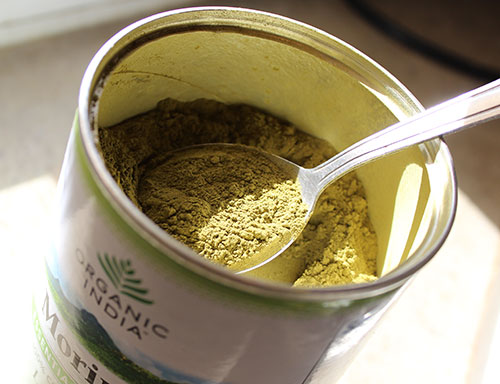
Multi-Purpose Uses of Moringa
As we mentioned, the benefits of moringa are extended to all parts of the entire tree, including the roots, bark, seeds, whole seed pods, flowers as well as the leaves.
Moringa Seed Uses
Moringa seeds are commonly used for three main purposes besides growing another moringa tree. The seed itself is a rich source of oil, often called "Oil of Ben", and can be extracted in an oil press for consumption or used in body products. Fresh mature seeds can also be cooked and eaten like peas.
The seeds contain two natural antibiotic and antifungal compounds, called pterygospermin and benzyl isothiocyanate, and are used to treat or eliminate bacterial infections. The crushed dried seeds are additionally used as an effective way to purify water in underdeveloped countries. Depending on water quality, between 50 to 150 milligrams of ground moringa seed is enough to treat one liter of water.
Whole Moringa Pods
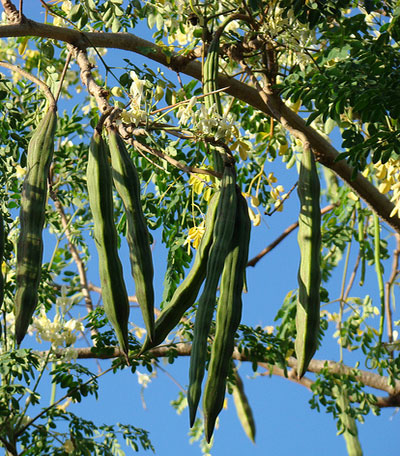
The moringa tree produces seed-bearing fruit in the form of long drumstick shaped bean pods, common to most nitrogen-fixing plants. Both the mature and immature pods can be eaten like green beans, but are generally more palatable when young and tender.
Moringa Root Uses
The root can be prepared as a tea or extract and is used for medicinal purposes as a home remedy for inflammation, arthritic pain and joint related health issues. The roots of young plants are also consumed as a grated horseradish substitute. Moringa root should be used in small amounts for medicinal use only as it has been shown to have toxic effects when used in excess.
Types of Moringa Leaf
- Dried Moringa - This is the dried leaves that can be further ground into powder form or used directly as a nutrient-rich tea.
- Powdered Moringa - This is the fine powder produced from the dried moringa leaves.
- Powdered Moringa Seeds and Leaves - This is the ground whole moringa seeds as well as the leaves.
- Moringa Capsules or Tablets - This is the encapsulated or condensed dried moringa powder.
- Fresh Moringa - The leaves can be harvested and used fresh like a leafy vegetable.
- Moringa Extracts - Usually an alcohol tincture made with the leaves, seeds or roots of the Moringa oleifera plant species.
- Moringa Tea - Pre-packaged teas of moringa leaf or powder
Moringa Quality
Ideally you want to purchase raw organic pure moringa leaf or powder that does not contain any fillers, preservatives or artificial ingredients.
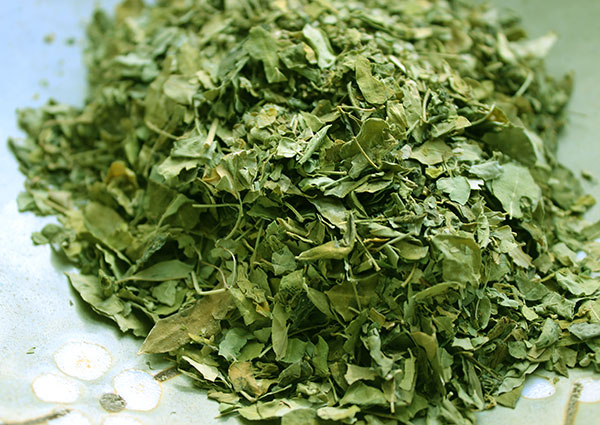
How to Use
Fresh moringa of course can be consumed as a leafy green vegetable, eaten raw in salads, green juiced, like wheatgrass, or lightly steamed. The young shoots are more palatable as a vegetable than the older tougher leaves.
The powder is very strong and has a savory taste, similar to vegetable broth. It is best used blended into soups, stews, grains or sprinkled over meals. When combined with sweet fruits it can also make a great addition to a green smoothie recipe and is further enhanced when blended with other superfoods.
If you have access to large quantities of moringa leaf, you can also make your own powder concentrate by stripping off the leaves and allowing them to dry on a screen for a few days in a dark dry location. Drying the leaves in this way preserves the nutrients and is helpful for extended storage and use.
The benefits of moringa can also be enjoyed as a savory cup of tea by either infusing the fresh or dried leaves or powder in hot water. The tea can be soothing for gastric ulcers, inflammation, diarrhea and helps stabilize blood sugar levels.
Precautions:
It is best to consult your health care professional or nutritionist prior to adding moringa to your diet if you are pregnant, nursing, taking any medications or have a medical condition.
Shop Related Products (About Affiliates & Amazon Associate Paid Links)
Affiliate Disclaimer: This section contains affiliate product links. If you make a purchase through our recommended links, we receive a small commission at no additional cost to you. Thanks for the support.
